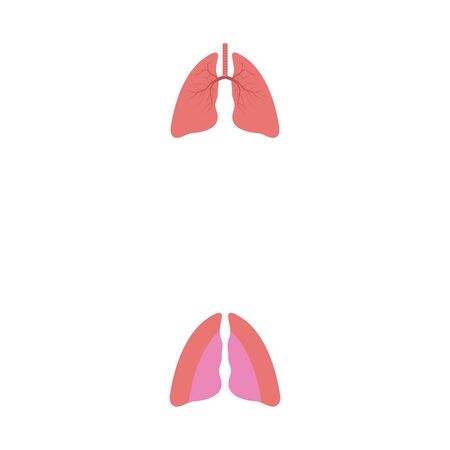Introduction to Multidisciplinary Teams in Spinal Cord Injury Rehabilitation
In recent years, the role of multidisciplinary teams (MDTs) has become increasingly central to spinal cord injury (SCI) rehabilitation within British clinical practice. MDTs represent a collaborative approach where professionals from various disciplines—such as physiotherapy, occupational therapy, nursing, psychology, and social work—work together to deliver comprehensive care tailored to each individual’s unique needs. The growing significance of MDTs in British SCI rehab reflects a broader shift towards holistic patient-centred care, recognising that no single clinician possesses all the expertise required to address the complex physical, psychological, and social challenges faced by people with spinal cord injuries. By drawing on the collective skills and perspectives of a diverse team, British clinics aim to optimise functional recovery, support psychological wellbeing, and facilitate successful community reintegration for patients living with SCI. This introduction sets the stage for exploring how MDTs operate across the UK and why their integrated model is now widely regarded as best practice in spinal cord injury rehabilitation.
2. Composition of MDTs: Key Roles in British Rehab Practices
In the UK, multidisciplinary teams (MDTs) are pivotal to the success of spinal cord injury rehabilitation. These teams unite professionals from diverse backgrounds, ensuring that each aspect of a patient’s recovery is addressed comprehensively. The composition and collaboration within these teams reflect best practices adopted across British clinics, where patient-centred care and evidence-based approaches are standard. Below is a detailed breakdown of the key roles commonly found within MDTs in the UK, along with their specific contributions to spinal cord injury rehab.
Core Professionals in British MDTs
| Role | Key Responsibilities | Distinct Contribution in UK Settings |
|---|---|---|
| Physiotherapist | Mobility training, muscle strengthening, respiratory management | Promotes functional independence; utilises NHS guidelines for tailored exercise regimes and mobility aids |
| Occupational Therapist | Daily living skills training, adaptive equipment assessment, home modifications | Facilitates reintegration into community and employment; liaises with local councils for accessible housing adaptations |
| Consultant (Specialist Doctor) | Medical oversight, treatment planning, management of complications | Provides leadership in MDT meetings; ensures clinical practice aligns with NICE standards and latest research |
| Nurse (Specialist/Registered) | Wound care, medication administration, patient education | Delivers ongoing support; coordinates care transitions within NHS settings; advocates for patient welfare |
| Social Worker | Psycho-social support, benefits advice, discharge planning | Navigates social services; supports access to government funding and community resources; addresses family concerns |
The Value of Integrated Practice
The effectiveness of British MDTs stems from their integrated approach. Regular case conferences ensure seamless communication among professionals, while person-centred planning remains at the core. Each member brings specialist knowledge that collectively shapes a holistic rehabilitation journey tailored to individual needs. This collaborative ethos—deeply embedded in UK healthcare culture—enables patients not only to achieve optimal physical recovery but also to regain autonomy and improve quality of life post-injury.

3. Collaborative Approaches to Patient-Centred Care
Within British spinal cord injury rehabilitation clinics, the ethos of patient-centred care is both a guiding principle and a practical framework, deeply embedded in the culture of the NHS. Multidisciplinary teams (MDTs) are pivotal in operationalising this philosophy, ensuring that each patient’s journey is tailored to their individual needs, preferences, and aspirations.
Holistic Assessment and Goal Setting
The foundation of MDT work lies in conducting comprehensive assessments that go beyond physical impairment. Team members—such as physiotherapists, occupational therapists, nurses, psychologists, and social workers—collaborate to understand the full scope of a patient’s medical, psychological, and social circumstances. This collective insight informs bespoke rehabilitation goals, which are co-created with the patient, ensuring that interventions reflect what truly matters to them rather than imposing a one-size-fits-all approach.
Integrated Pathways in Practice
British clinics often utilise structured care pathways designed to facilitate seamless transitions between acute care, rehabilitation, and community reintegration. Regular MDT meetings foster open dialogue among professionals and patients alike, enabling shared decision-making and real-time adjustments to care plans. This collaborative process is not only efficient but also fosters trust and engagement—a hallmark of NHS values.
Cultural Sensitivity and Empowerment
The UK’s diverse population requires MDTs to be culturally attuned when delivering patient-centred care. In practice, this means respecting individual backgrounds, beliefs, and communication styles while empowering patients through education and active involvement in their own recovery process. The focus on empowerment aligns with broader NHS objectives: promoting independence and improving quality of life post-injury.
4. Challenges and Best Practices in British Clinics
While multidisciplinary teams (MDTs) are fundamental to spinal cord injury rehabilitation in the UK, they face unique challenges that can impact both efficiency and patient outcomes. British clinics have developed a range of best practices to overcome these obstacles, drawing on both local experience and evidence-based strategies.
Key Obstacles for MDTs in Spinal Cord Injury Rehabilitation
One of the most persistent issues is effective communication across diverse specialisms. Misunderstandings or delays in sharing patient information can hinder the continuity of care. Additionally, resource allocation remains a significant concern; balancing staffing, funding, and time constraints often requires creative solutions. Finally, cultural differences within teams—stemming from various professional backgrounds—can sometimes lead to differing priorities or approaches to care.
| Challenge | Impact | Example |
|---|---|---|
| Poor Communication | Fragmented care, duplication of effort | Physiotherapists and occupational therapists not aligning goals for mobility aids |
| Resource Limitations | Delays in treatment, staff burnout | Limited specialist nurse cover over weekends |
| Cultural Differences within Team | Tension, inconsistent care plans | Differing views between clinicians and social workers regarding discharge planning |
Strategies Employed by UK Clinics to Optimise Teamwork
To mitigate these challenges, British clinics implement several best practices:
- Regular Interdisciplinary Meetings: Weekly case conferences ensure all professionals are up-to-date with patient progress and can coordinate interventions efficiently.
- Use of Integrated Digital Records: Many NHS trusts have adopted shared electronic health records, which facilitate transparent communication and reduce errors.
- Role Clarification Workshops: Periodic training sessions help clarify each team member’s responsibilities, fostering respect and collaboration.
- Resource Mapping and Flexible Rotas: By assessing peak demands and cross-training staff where appropriate, clinics optimise resource use without compromising patient care.
- Cultural Competency Training: These initiatives improve mutual understanding among team members from different backgrounds, leading to more harmonious working relationships.
Best Practice Snapshot: The Importance of Reflective Practice Sessions
Many British spinal injury units schedule regular reflective practice sessions, providing space for open discussion about difficult cases or team dynamics. This encourages continuous improvement and supports staff wellbeing—vital for maintaining high standards of care in a challenging environment.
5. Case Study: Successful MDT Interventions in the NHS
The Setting: A Leading British Spinal Cord Injury Centre
Within the NHS, the National Spinal Injuries Centre (NSIC) at Stoke Mandeville Hospital stands as an exemplar of multidisciplinary teamwork in spinal cord injury (SCI) rehabilitation. The NSIC has a long-standing reputation for pioneering holistic care, where collaboration between different specialties forms the cornerstone of patient management. This approach ensures that no aspect of the patient’s journey is overlooked, from acute care through to reintegration into community life.
A Patient-Centred Approach to Rehabilitation
Consider the case of a young adult who sustained a complete thoracic SCI following a road traffic accident. Upon admission, the patient was immediately reviewed by the core MDT, comprising consultants in rehabilitation medicine, specialist nurses, physiotherapists, occupational therapists, psychologists, and social workers. Each team member contributed their expertise to formulate a bespoke care plan. Physiotherapists focused on maintaining muscle tone and preventing contractures; occupational therapists introduced adaptive techniques for daily living activities; psychologists offered emotional support and coping strategies; and social workers liaised with local authorities regarding housing adaptations and benefits.
Collaborative Goal Setting and Progress Monitoring
Weekly MDT meetings provided a structured forum for discussing progress, setting realistic goals, and promptly addressing any setbacks. For instance, when the patient developed pressure sores—a common complication in SCI—the tissue viability nurse and dietitian worked closely to optimise wound care and nutrition. Simultaneously, physiotherapists adjusted mobility routines to reduce further risk. The coordinated efforts enabled swift resolution and minimised secondary complications.
Long-Term Outcomes and Community Reintegration
The hallmark of this MDT intervention was not only functional improvement but also successful community reintegration. Through early vocational counselling and engagement with local support groups, the patient transitioned from inpatient rehabilitation to independent living within six months. Follow-up audits revealed marked improvements in quality of life indices and psychological well-being compared to national averages.
This case exemplifies how effective MDT collaboration—rooted in British clinical practice—directly enhances recovery trajectories for individuals with spinal cord injuries. It underscores the NHS’s commitment to integrated, person-centred rehabilitation as best practice within UK healthcare.
6. Future Perspectives: Evolving Roles and Integration
Technological Advancements in Rehabilitation
One of the most significant trends influencing multidisciplinary spinal cord injury (SCI) rehabilitation in the UK is the growing integration of advanced technologies. British clinics are increasingly adopting tools such as robotics, virtual reality, and tele-rehabilitation platforms to support both physical and psychological recovery. These technologies not only enhance patient engagement but also facilitate more personalised care plans, which are tailored to individual needs and progress rates. The continued evolution of digital health records and data-sharing systems further supports collaboration among team members, ensuring a seamless approach to patient management.
Changing Professional Roles within Multidisciplinary Teams
The dynamic landscape of British healthcare has prompted a shift in traditional professional boundaries within multidisciplinary teams. As roles evolve, there is a greater emphasis on cross-disciplinary competencies—such as physiotherapists taking on elements of psychological support or occupational therapists incorporating more technological literacy into their practice. In addition, the increasing involvement of peer mentors and patient advocates brings valuable lived experience into clinical discussions, aligning with the NHS’s broader commitment to person-centred care.
Integration Across Care Pathways
Another emerging trend is the drive for integrated care pathways that bridge acute hospital-based rehabilitation with long-term community support. British clinics are pioneering models where social workers, vocational counsellors, and housing specialists collaborate more closely with core medical staff. This holistic approach ensures that SCI patients receive comprehensive support as they transition from hospital to home and reintegrate into society.
Looking Forward: Opportunities and Challenges
While these developments hold great promise for improving outcomes in spinal cord injury rehab, they also present challenges related to training, resource allocation, and equitable access across regions. Ongoing investment in education and interprofessional development will be crucial for enabling teams to adapt effectively. Moreover, as British healthcare continues to evolve—with policy shifts towards integrated care systems—the role of multidisciplinary teams will remain central to delivering high-quality, innovative spinal cord injury rehabilitation nationwide.


